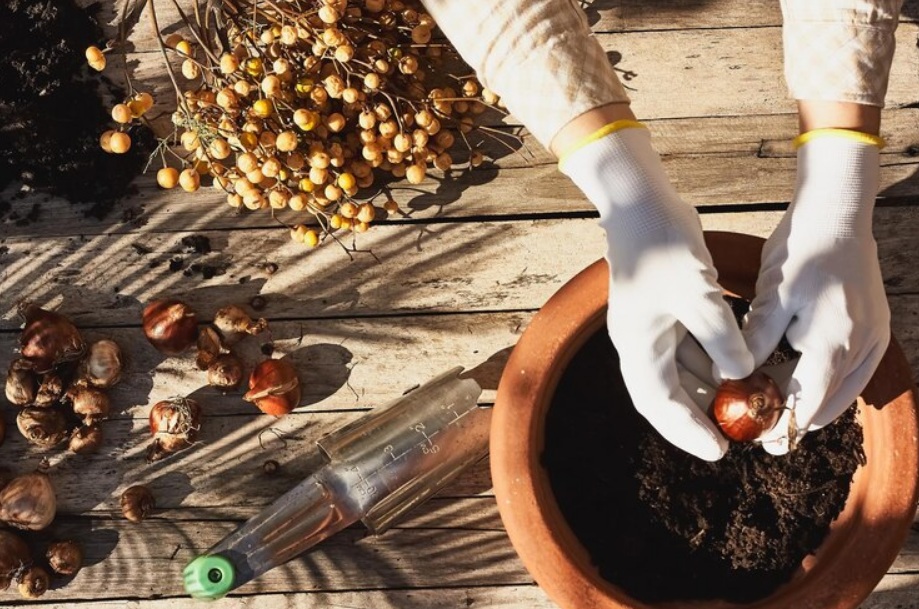Late August is the right time to start prepping gardens in Kenmore for fall planting. With the hot months wrapping up and cooler temperatures around the corner, your soil needs to be in solid shape to support healthy growth. Whether you’re planting vegetables, flowers, or fall shrubs, better soil health will give your plants a strong start and help them stay resilient through the season.
Many Kenmore homeowners make the mistake of assuming that adding water and sunlight is all it takes. But fall planting success often hinges on soil that’s been tested, amended, and properly structured. Without these steps, your plants could struggle to take root or, worse, fail to grow altogether. Now’s the time to pay attention to what your soil actually needs before you start planting.
Assessing Your Garden Soil Quality
Before doing anything else, it’s important to know what you’re working with. Your garden’s soil might look fine on the surface, but that doesn’t always tell the full story. Some soil may lack nutrients, have poor drainage, or be too compacted for new roots to grow. Taking time to assess your soil helps you avoid problems during the growing season.
Here’s how to check basic soil quality in your Kenmore garden:
– Scoop a handful of soil from different spots in your garden.
– Squeeze it in your hand. Good soil should hold its shape but break apart easily.
– Look for earthworms or other small organisms. This usually points to good microbial activity.
– Check for texture. Gritty soil may have too much sand, while sticky soil might have too much clay.
– Smell the soil. A sour or rotten smell could mean poor drainage or excess organic matter.
You can also find simple soil test kits at home improvement centers or garden stores. These kits test for pH, nitrogen, phosphorus, and potassium levels. If your plants have had trouble in the past, like yellowing leaves or stunted growth, it’s likely your soil might need a closer look.
Keep in mind that each part of your yard might have different soil conditions. If you’re planting along a fence line or near trees, those areas may have different drainage and nutrient levels than open garden beds. Soil testing helps make informed decisions on where and how to plant.
Amending Your Topsoil for Optimal Growth
Topsoil serves as the upper layer that most plants rely on for nutrients and structure. If your topsoil in Kenmore is thin, packed down, or stripped of organic material, your plants aren’t going to grow well. Fortunately, there are ways to improve it in time for fall planting.
Start by checking soil depth. If your topsoil is less than 4 inches deep, consider adding more to support healthy roots. When bringing in new topsoil, make sure it’s blended well so that it doesn’t create drainage layers that interfere with water flow. Mixing evenly across your garden beds helps roots connect with nutrients smoothly.
To improve existing topsoil, try the following:
1. Loosen compacted areas with a digging fork or tiller to make room for air and water.
2. Blend in compost, rotted manure, or decomposed leaves to boost organic matter.
3. Spread a thin layer of well-balanced fertilizer that contains nitrogen, phosphorus, and potassium.
4. Rake your topsoil level so moisture reaches plant roots evenly.
If your garden previously struggled with water pooling or hard spots, topsoil amendment should be a top priority. These small changes can prevent headaches later, like slow-growing plants or muddy patches after rainfall.
Adding the right materials into your topsoil boosts its ability to hold moisture and nutrients. That’s especially important in fall, when roots work hard to establish before winter. Whether you’re working with raised garden beds or an open lawn area, taking a little time to correct your topsoil now can help your plants stay healthier through cooler months.
Techniques for Improving Soil Structure
Even if your topsoil in Kenmore has enough nutrients, poor structure can stop your plants from thriving. When soil becomes compacted or too dense, it’s harder for roots to push through and for water and air to reach them. This usually happens when gardens see heavy foot traffic or when dry summer weather bakes the ground solid. Starting before fall planting gives you enough time to fix these issues.
One of the best ways to improve structure is to loosen up the soil. You can do this by gently turning the soil with a digging fork instead of a shovel, which can create hard layers under the surface. Focus on areas where drainage has been a problem or where plants haven’t grown well. Use this time to dig a few inches deeper than the previous root depth to promote healthy expansion going forward.
Adding organic matter also helps a lot. Here are types of materials that support better soil texture:
– Aged compost: Breaks down clay, holds nutrients, and improves moisture balance.
– Shredded leaves: Promote airflow between soil particles.
– Finely ground bark: Helps maintain light, loose soil structure.
– Worm castings or well-aged manure: Adds both nutrients and structure improving organisms.
Avoid walking directly over areas you’ve just loosened or amended. This prevents soil from becoming compacted again before planting time. Some people use stepping stones or narrow boards in larger beds to avoid pressing the soil down.
Restoring the structure isn’t a one-time fix. It should be part of your regular planning as seasons change. Healthy structure makes sure topsoil remains workable, retains water more evenly, and supports stronger root systems going into fall and beyond.
Benefits of Mulching and Proper Watering
With your soil health and structure in place, the next step is to lock in moisture and nutrients while keeping weeds down. This is where mulching helps. In Kenmore, fall weather can alternate between dry, chilly days and sudden rain. A proper mulch layer helps manage these swings by regulating soil temperature and reducing evaporation.
The type of mulch you choose affects your results. For fall planting, natural mulch works best. Some good choices include:
– Bark mulch: Breaks down slowly and adds texture while maintaining a steady layer of ground cover.
– Straw or shredded leaves: Offer lightweight coverage that allows rainfall to soak through more easily.
– Wood chips (aged): Good for pathways and planting beds but should be kept a few inches away from plant stems to avoid moisture buildup.
Start with a 2- to 3-inch layer, but don’t overdo it. Too much mulch can trap moisture and lead to fungal growth. Check your soil frequently during the season, especially if it’s been wet for several days, and pull mulch back if needed.
Watering also plays a key role as temperatures begin to dip. Even though there’s typically more rainfall, it doesn’t always mean plants get enough moisture, especially as roots are adjusting to new conditions. Make sure to water deeply about once or twice a week, depending on how quickly your soil drains. Early morning is the best time to water in cooler months so the soil has time to absorb it fully before night.
Use mulch and water together to support your topsoil and structure efforts. They create a zone where roots can adjust quickly to colder weather and keep accessing moisture and nutrients without strain.
When to Bring In Professional Help
There are times when basic amendments and prep aren’t enough. If your topsoil in Kenmore has been heavily damaged, flooded, or you’ve had major drainage or growth problems, our professionals can step in with advanced solutions. Some properties have grading issues, long-standing compaction that needs heavier equipment, or poor-quality fill dirt left over from construction. These cases take more than a shovel and compost to fix.
Here are signs that it’s time to call in our technicians:
– Consistent standing water in garden beds after rain
– Plants that continue to underperform despite multiple attempts
– Soil so compacted it’s hard to dig more than a few inches
– Patchy plant growth suggesting uneven soil quality
– Garden spaces where even weeds struggle to grow
Our professionals can evaluate the entire condition of your soil including texture, nutrients, grading, and drainage. Then, they can bring in the right mix of topsoil, rich amendments, and practical equipment to get your yard ready for planting. Letting experienced technicians handle these more technical problems helps you avoid patchwork fixes that don’t last.
Get Your Garden Ready to Grow Strong This Fall
You don’t have to guess where your soil stands. With a little extra attention to what’s beneath the surface, your garden will be better prepared for fall planting and can support strong root development even as temperatures change. Taking the time now to check your topsoil, improve structure, and apply mulch leads to a smoother transition into the new season.
Don’t wait until cold weather limits your options or compacts your plans even more. With the right steps in place such as amending, structuring, and insulating your garden beds, your Kenmore soil will be set up to perform better year after year.
Optimize your garden’s fall performance by using high-quality topsoil in Kenmore to ensure consistent moisture retention and robust root growth, which helps your plants overcome hard-packed soil and variable weather changes. Taking these steps can lead to a season of strong, healthy plant development while minimizing issues like compaction and uneven nutrient distribution. Northwest Landscape Supply understands the challenges of preparing your garden for fall, and for a quick estimate or to book a service visit, please contact us today.

